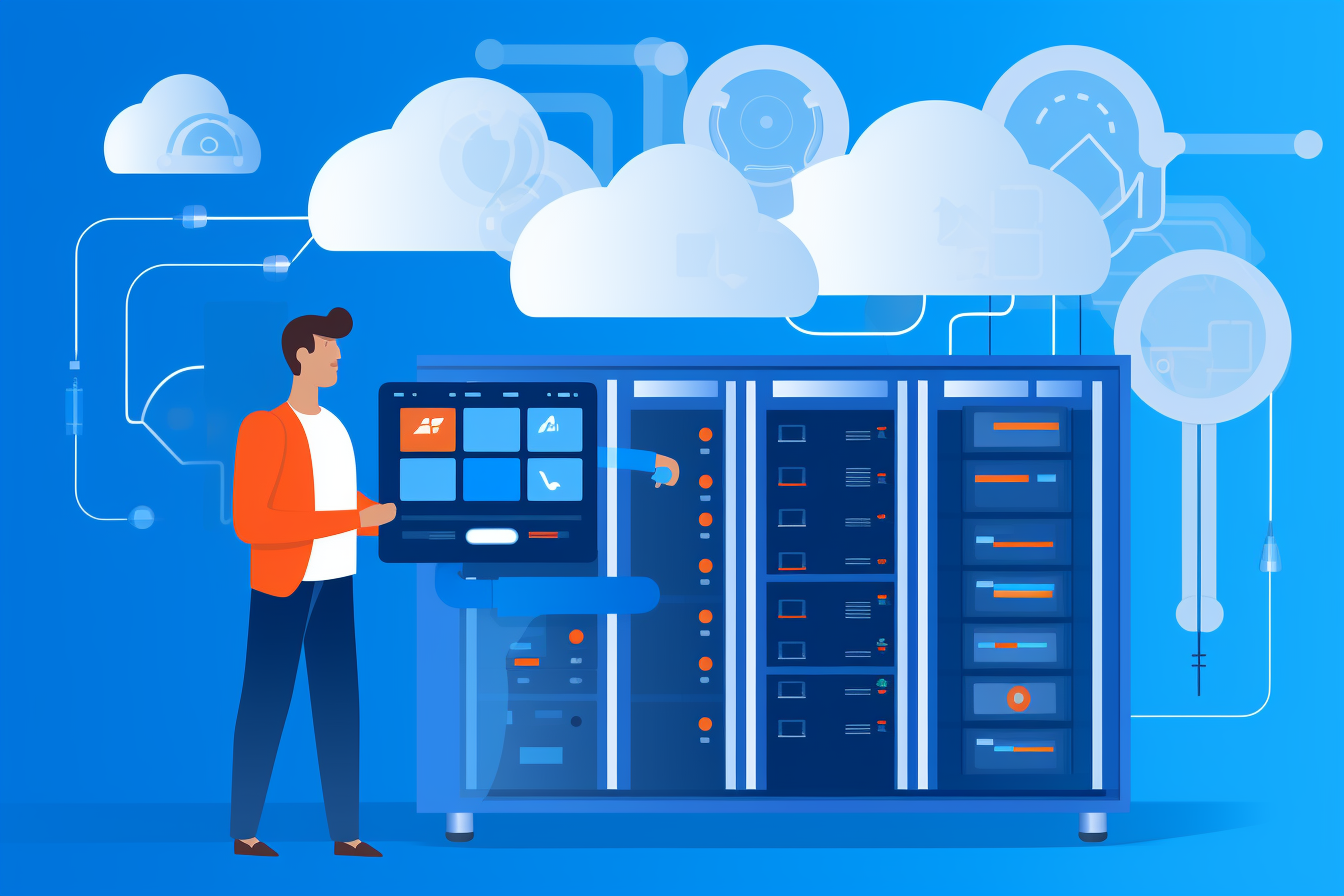-
Demystifying AAA: Authentication, Authorization, and Accounting
In the realm of network security, Authentication, Authorization, and Accounting (AAA) are fundamental concepts that form the backbone of access control and user management. In this blog post, we will delve into each of these concepts, understand their roles, and explore how they work together to ensure a secure and accountable network environment. Authentication: Authentication…
-
Fortifying Network Security with Layer 2 Protection
Network security is a paramount concern for any organization, and implementing robust Layer 2 security features is a crucial step in safeguarding against potential threats. In this blog post, we will explore three essential Layer 2 security features: DHCP snooping, dynamic ARP inspection, and port security. We will discuss how each feature works, their configuration…
-
Mastering Access Control Lists (ACLs) in Network Security
Access Control Lists (ACLs) are essential tools for enhancing network security by controlling traffic flow and filtering packets based on specific criteria. In this blog post, we will explore the concepts of ACLs, understand how they work, and delve into the configuration and verification process to ensure secure network communication. What are Access Control Lists…
-
Understanding IPsec Remote Access and Site-to-Site VPNs
Virtual Private Networks (VPNs) play a crucial role in modern network infrastructures, enabling secure communication over public networks such as the internet. IPsec (Internet Protocol Security) is a widely used protocol suite for implementing VPNs. In this blog post, we will explore IPsec-based remote access and site-to-site VPNs, their key components, and how they provide…
-
Implementing Effective Security Password Policies in Network Environments
Securing access to network devices is of utmost importance to protect against unauthorized access and potential security breaches. Passwords are a critical component of network security, and implementing robust password policies is essential to enhance overall security posture. In this blog post, we will delve into the key elements of security password policies, including password…
-
Configuring User Authentication and Secure VTY Line Access on Cisco Devices
Network security is paramount in today’s interconnected world, and protecting access to Cisco devices is a critical aspect of maintaining a secure network infrastructure. In this blog post, we will walk through the process of configuring users and passwords on a Cisco device, as well as securing access to VTY lines by requiring both a…
-
Building a Robust Security Program: Key Elements for Network Protection
In today’s rapidly evolving digital landscape, establishing a strong security program is crucial to safeguarding sensitive data and ensuring the integrity of network communication. A well-rounded security program comprises several essential elements, including user awareness, training, and physical access control. In this blog post, we will delve into each of these elements, exploring their significance…
-
Strengthening Network Security: Understanding Threats, Vulnerabilities, Exploits, and Mitigation Techniques
In today’s interconnected world, network security is of paramount importance to protect sensitive data and maintain the integrity of communication. Understanding key security concepts such as threats, vulnerabilities, exploits, and mitigation techniques is essential for network administrators and engineers. In this blog post, we will delve into these concepts and explore how they play a…
-
File Transfer Made Easy: TFTP and FTP in the Network
File Transfer Protocol (FTP) and Trivial File Transfer Protocol (TFTP) are essential networking protocols used for transferring files between devices in a network. They serve as efficient and reliable means to upload and download files, configurations, and firmware to network devices. In this blog post, we will explore the capabilities and functions of TFTP and…
-
Ensuring Quality of Service with Per-Hop Behavior (PHB)
Quality of Service (QoS) is a critical aspect of modern networking that ensures efficient and reliable data transmission across the network. Per-Hop Behavior (PHB) plays a key role in QoS implementation by defining the forwarding behavior of network devices for different types of traffic. In this blog post, we will explore the essential components of…
-
Secure Remote Access with SSH: Configuring Network Devices
Secure Shell (SSH) is a cryptographic network protocol used for secure remote access to network devices. It provides a secure channel over an unsecured network, ensuring confidentiality and integrity of data transmitted between the client and the network device. In this blog post, we will explore the steps to configure network devices for remote access…
-
Effortless Network Configuration with DHCP Client and Relay
Dynamic Host Configuration Protocol (DHCP) plays a vital role in simplifying network configuration by automatically assigning IP addresses and other network parameters to devices. In this blog post, we will explore the process of configuring and verifying DHCP client and relay functionality on Cisco routers. By understanding DHCP client operation and configuring DHCP relay agents,…
-
Harnessing Syslog Features for Efficient Network Management
In the realm of network management and troubleshooting, syslog stands as a vital component for capturing and storing critical system messages from various network devices. Syslog offers a standardized method for logging events, warnings, and errors, which proves invaluable in maintaining network health and security. In this blog post, we will explore the use of…
-
Unlocking the Power of SNMP in Network Operations
In the world of network management and monitoring, the Simple Network Management Protocol (SNMP) plays a crucial role. SNMP is a widely used protocol that enables network administrators to gather valuable information, manage network devices, and monitor network performance. In this blog post, we will explore the function of SNMP, its key components, and how…
-
DHCP and DNS: Pillars of Network Connectivity
Dynamic Host Configuration Protocol (DHCP) and Domain Name System (DNS) are two crucial network services that play vital roles in simplifying and enhancing network connectivity. DHCP automates the assignment of IP addresses to devices, while DNS translates human-readable domain names into IP addresses. Together, these protocols ensure seamless communication and efficient data exchange across the…
-
Mastering Time Synchronization: NTP Configuration and Stratum Values
Time synchronization is a critical aspect of networking, ensuring that all devices within a network have consistent and accurate timekeeping. In this blog post, we will explore the Network Time Protocol (NTP) and how it operates in both client and server modes. We will delve into NTP configuration, the significance of stratum values, and how…
-
Configuring and Verifying Inside Source NAT using Static and Pools
Network Address Translation (NAT) is a fundamental technique used in networking to conserve IP address space and enable communication between private networks and the public internet. Inside Source NAT, also known as NAT overload or Port Address Translation (PAT), allows multiple internal private IP addresses to share a single public IP address when accessing the…
-
Understanding First Hop Redundancy Protocols: HSRP, VRRP, and GLBP
In modern network environments, high availability and fault tolerance are critical factors to ensure uninterrupted connectivity. First Hop Redundancy Protocols (FHRPs) play a crucial role in achieving these objectives by providing redundancy for the default gateway, which is the first hop a host takes when sending packets outside its local network. In this blog post,…
-
Configuring and Verifying Single Area OSPFv2
Open Shortest Path First version 2 (OSPFv2) is a widely-used routing protocol that efficiently routes IP packets within a single autonomous system. OSPFv2 uses link-state advertisements (LSAs) to build a topology map of the network, allowing routers to calculate the shortest path to a destination. In this blog post, we will explore how to configure…
-
Configuring and Verifying IPv4 and IPv6 Static Routing
Static routing is an essential aspect of network configuration, allowing administrators to manually define specific routes for data packets to traverse between networks. Unlike dynamic routing, where routers exchange routing information, static routes are manually configured and do not change automatically. In this blog post, we will explore how to configure and verify IPv4 and…
-
Making Forwarding Decisions: Understanding Router Behavior
Routers are the backbone of network communication, and understanding how they make forwarding decisions is fundamental for network administrators. By default, routers employ specific mechanisms to determine the most appropriate path for data packets to reach their destinations efficiently. In this blog post, we will explore the default methods routers use to make forwarding decisions:…
-
Understanding Routing Tables: A Comprehensive Guide
Routing tables play a crucial role in network communication, determining the most efficient paths for data packets to reach their intended destinations. As a network administrator, comprehending the components of a routing table is essential for designing and managing robust and reliable networks. In this blog post, we will delve into the key components of…
-
Harnessing Azure Monitor: Gain Real-time Insights and Optimize Your Azure Environment
In the dynamic world of Azure cloud computing, organizations seek efficient ways to monitor and optimize their Azure resources. Azure Monitor offers a comprehensive set of monitoring and diagnostic tools that enable organizations to gain real-time insights, detect and resolve issues proactively, and optimize their Azure deployments. In this blog post, we will explore the…
-
Configuring Wireless LAN Access for Client Connectivity using GUI
In modern networking, Wireless Local Area Networks (WLANs) have become an integral part of our daily lives, providing seamless connectivity and flexibility for users. Configuring WLAN access for client connectivity involves several essential components, ranging from WLAN creation and security settings to Quality of Service (QoS) profiles and advanced WLAN settings. In this blog post,…
-
Ensuring Continuity with Azure Service Health: Your Window into Azure Service Status
In today’s highly interconnected digital landscape, organizations rely on uninterrupted access to cloud services for their critical operations. Azure Service Health serves as a vital resource, providing real-time insights and updates about Azure service status, planned maintenance, and incidents. In this blog post, we will explore the purpose of Azure Service Health, its key features,…
-
Managing Access Points (APs) and Wireless LAN Controllers (WLCs)
In modern Wireless Local Area Networks (WLANs), effective management of Access Points (APs) and Wireless LAN Controllers (WLCs) is essential to ensure seamless connectivity and security. Various management access connections provide administrators with the means to configure, monitor, and troubleshoot these devices. In this blog post, we will explore the different management access methods for…
-
Unleashing the Power of Azure Advisor: Maximizing Your Azure Deployments
In the fast-paced world of Azure cloud computing, organizations are constantly seeking ways to optimize their Azure deployments, enhance performance, fortify security, and streamline costs. Azure Advisor is an invaluable companion in this endeavor, offering tailored recommendations and best practices to unlock the full potential of your Azure environment. In this blog post, we will…
-
Exploring Physical Infrastructure Connections of WLAN Components
Wireless Local Area Networks (WLANs) have become an integral part of modern networking infrastructures, providing seamless connectivity and mobility to users. To ensure the smooth operation of WLAN components, it’s essential to understand the physical infrastructure connections that interconnect these components. In this blog post, we will delve into the key aspects of physical connections…
-
Exploring Cisco Wireless Architectures and AP Modes
In today’s interconnected world, wireless networks play a crucial role in providing seamless connectivity and mobility. Cisco, a leading networking solutions provider, offers a range of wireless architectures and Access Point (AP) modes to meet diverse business needs. In this blog post, we will delve into the key features of Cisco Wireless Architectures and explore…
-
Simplify Azure Resource Management: Exploring Azure Resource Manager (ARM) and ARM Templates
Azure Resource Manager (ARM) is a powerful management layer in Azure that enables organizations to deploy, manage, and organize Azure resources efficiently. At the core of ARM’s capabilities are ARM templates, which provide a declarative and repeatable approach for defining and deploying Azure resources. In this blog post, we will delve into the purpose of…





























